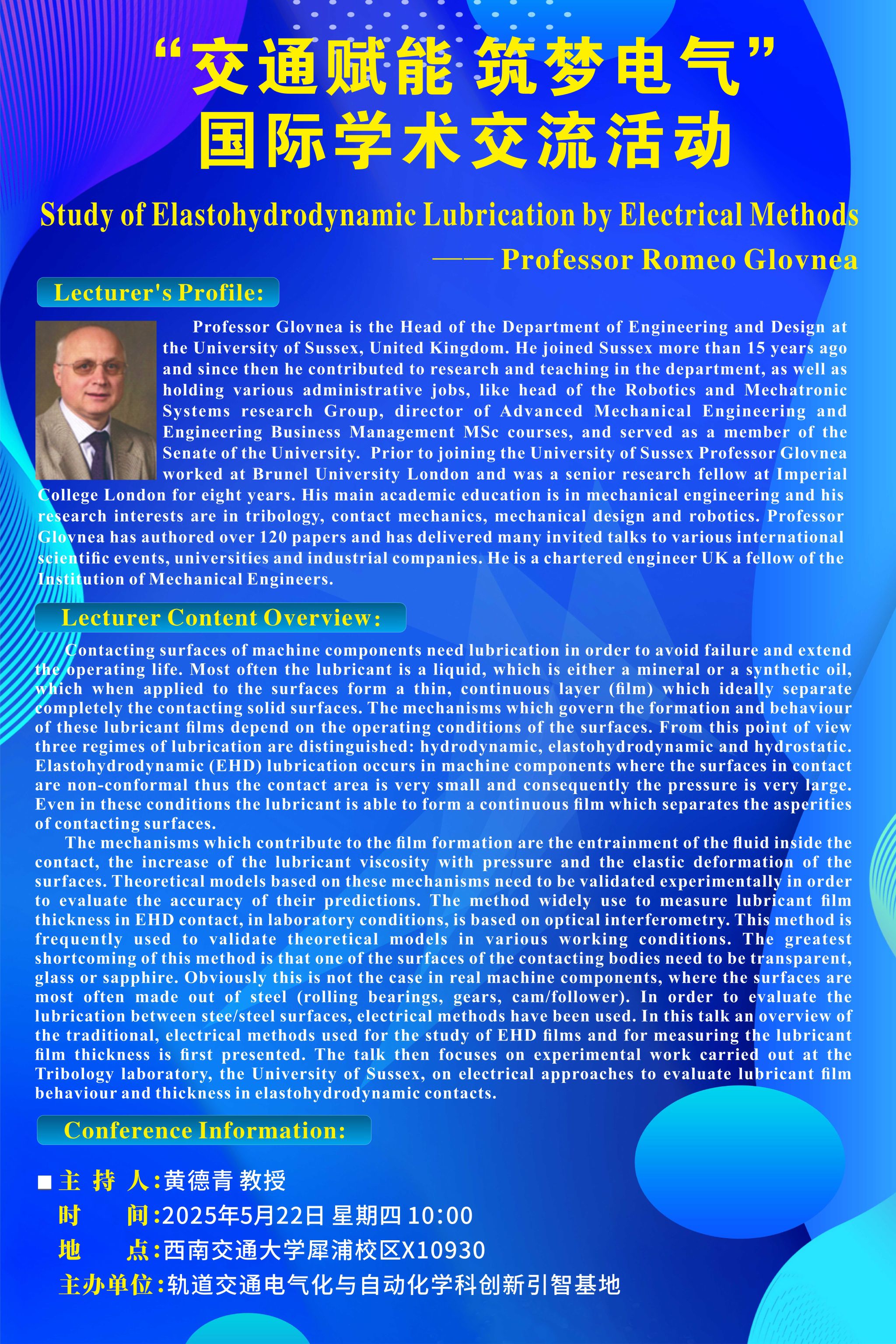Study of Elastohydrodynamic Lubrication by Electrical Methods
Time : May 19, 2025 Browse the number :

Time:Thursday, May 22, 2025, 10:00 AM
Place: X10930
Introduction:
Contacting surfaces of machine components need lubrication in order to avoid failure and extend the operating life. Most often the lubricant is a liquid, which is either a mineral or a synthetic oil, which when applied to the surfaces form a thin, continuous layer (film) which ideally separate completely the contacting solid surfaces. The mechanisms which govern the formation and behaviour of these lubricant films depend on the operating conditions of the surfaces. From this point of view three regimes of lubrication are distinguished: hydrodynamic, elastohydrodynamic and hydrostatic. Elastohydrodynamic (EHD) lubrication occurs in machine components where the surfaces in contact are non-conformal thus the contact area is very small and consequently the pressure is very large. Even in these conditions the lubricant is able to form a continuous film which separates the asperities of contacting surfaces.
The mechanisms which contribute to the film formation are the entrainment of the fluid inside the contact, the increase of the lubricant viscosity with pressure and the elastic deformation of the surfaces. Theoretical models based on these mechanisms need to be validated experimentally in order to evaluate the accuracy of their predictions. The method widely use to measure lubricant film thickness in EHD contact, in laboratory conditions, is based on optical interferometry. This method is frequently used to validate theoretical models in various working conditions. The greatest shortcoming of this method is that one of the surfaces of the contacting bodies need to be transparent, glass or sapphire. Obviously this is not the case in real machine components, where the surfaces are most often made out of steel (rolling bearings, gears, cam/follower). In order to evaluate the lubrication between stee/steel surfaces, electrical methods have been used. In this talk an overview of the traditional, electrical methods used for the study of EHD films and for measuring the lubricant film thickness is first presented. The talk then focuses on experimental work carried out at the Tribology laboratory, the University of Sussex, on electrical approaches to evaluate lubricant film behaviour and thickness in elastohydrodynamic contacts.
Delivered by Romeo Glovnea
Professor Glovnea is the Head of the Department of Engineering and Design at the University of Sussex, United Kingdom. He joined Sussex more than 15 years ago and since then he contributed to research and teaching in the department, as well as holding various administrative jobs, like head of the Robotics and Mechatronic Systems research Group, director of Advanced Mechanical Engineering and Engineering Business Management MSc courses, and served as a member of the Senate of the University. Prior to joining the University of Sussex Professor Glovnea worked at Brunel University London and was a senior research fellow at Imperial College London for eight years. His main academic education is in mechanical engineering and his research interests are in tribology, contact mechanics, mechanical design and robotics. Professor Glovnea has authored over 120 papers and has delivered many invited talks to various international scientific events, universities and industrial companies. He is a chartered engineer UK a fellow of the Institution of Mechanical Engineers.

